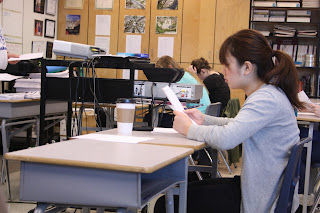A female, mid twenty year old Macaw is let out of her cage,
a late June evening (6-14th-12). Covering her front and shoulders
are the results of anxiety induced self mutilation, which can be caused due to unnatural living
environments.
Restlessly walking and turning, a middle aged male cockatiel
stares beyond the bars that contain him. Caught in a moment of stillness, the background
of the Thursday evening (6-14th-12) continues in chaos.
Budgerigars are often overcrowded in deficiently sized cages,
as they are unable to excessively damage to one another physically. Such
as these budgerigars, on a June evening (6-14th-12).
Back feathers left unpreened due to lack of interior cage
space. This leaves the older, female cockatoo unable to engage in grooming and hygiene
behaviors from within her cage. Her solace being that she is
allowed out of her cage to act as a door greeter and child entertainer some
days, but not today (6-14th-12).
The birds that are contained in cages that are at the bottom, under other
cages lack many aspects of a natural environment; the lack of lighting can change
hormone levels and disrupt breeding cycles. This Indian Ringneck parrot (top) as well
as these canaries (bottom) are living in cages such as this during a June evening (6-14th-12).
A male cockatiel rests his eyes as around sixty other birds express their mental boredom and frustration all around him. This is done through relieving
activities such as screaming, pacing or banging toys or their beaks against cage bars (6-14th-12).
Most of the birds including this male cockatiel shifted nervously
as they were approached; they retreated from all inquiring fingers or faces, as
they immersed to the back of their baron cages (6-14th-12).










































